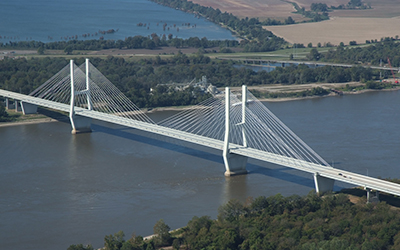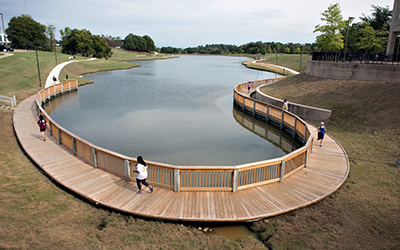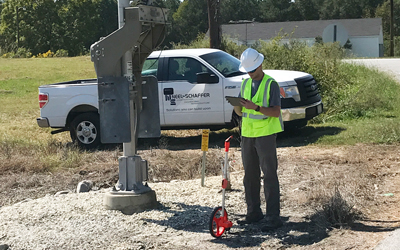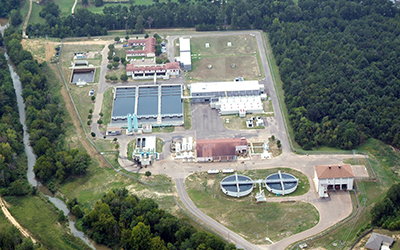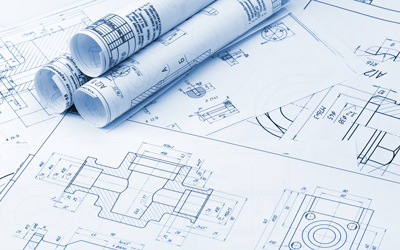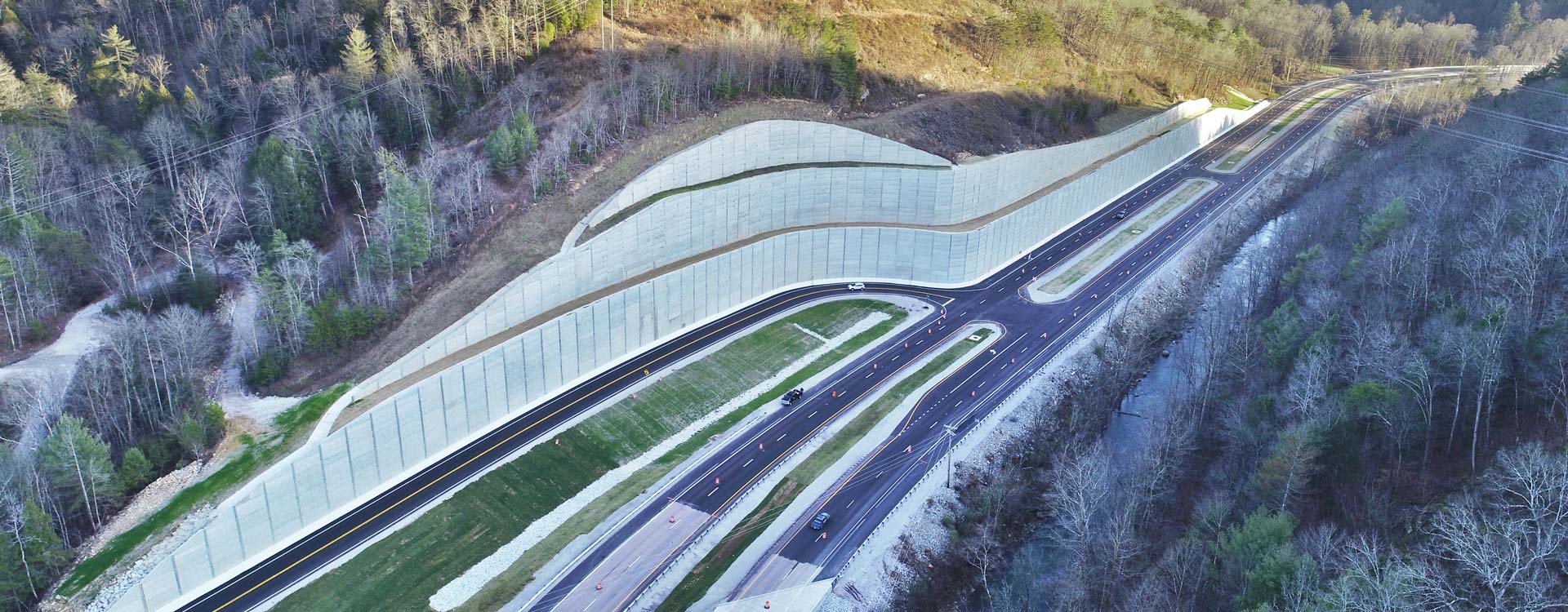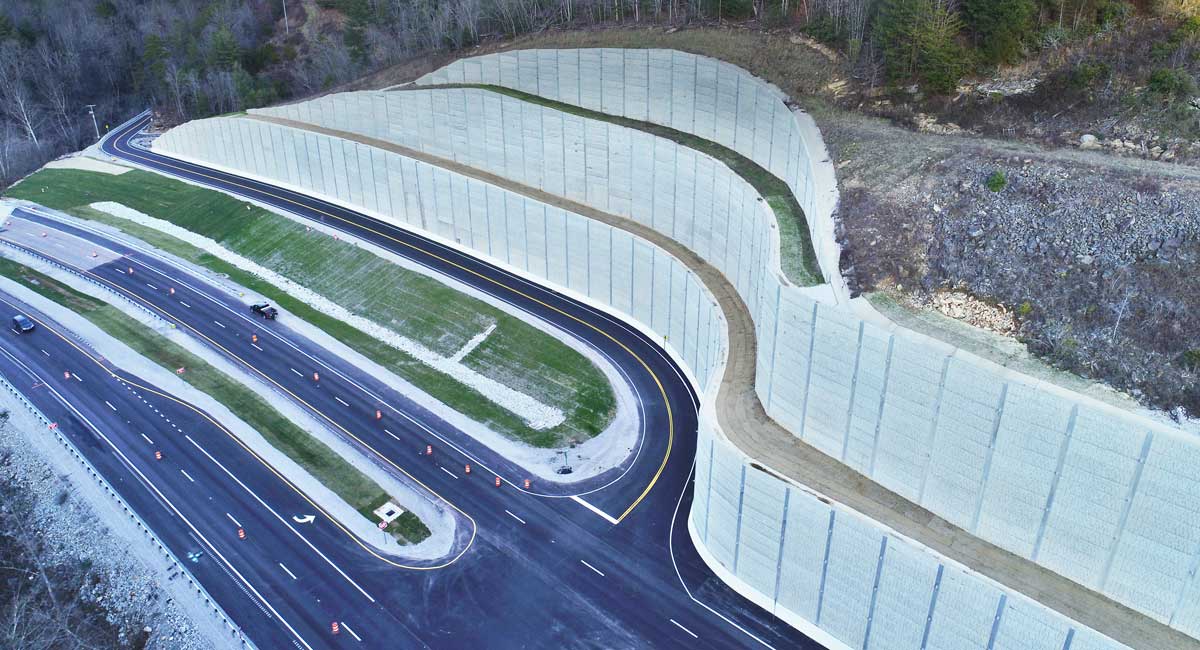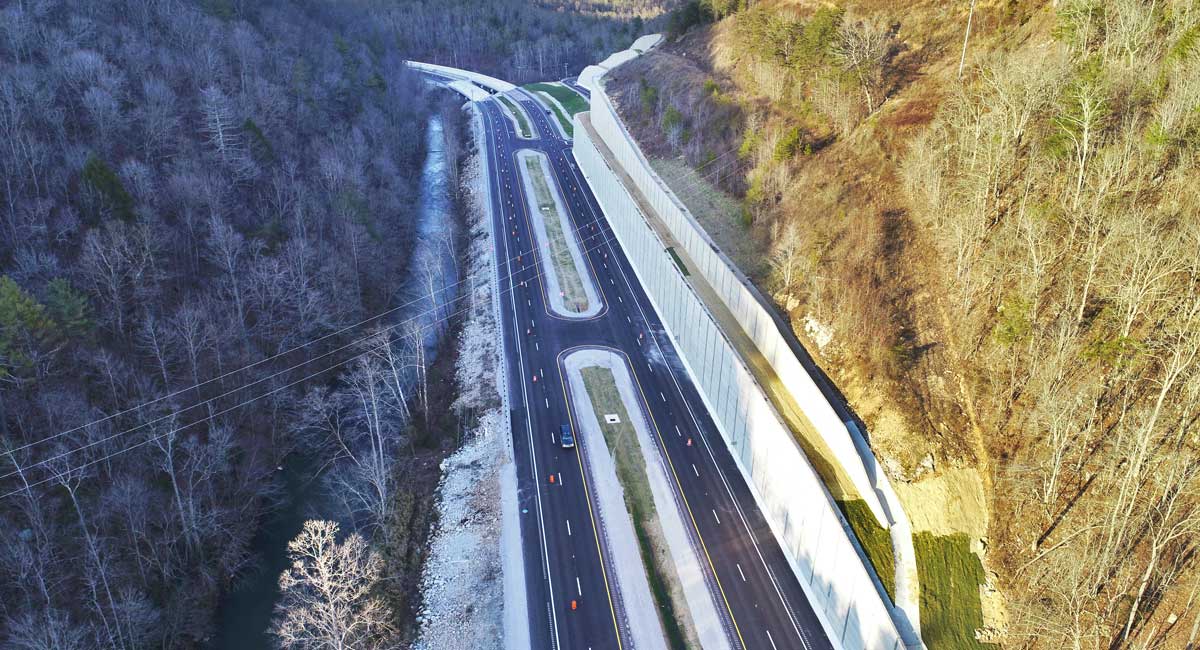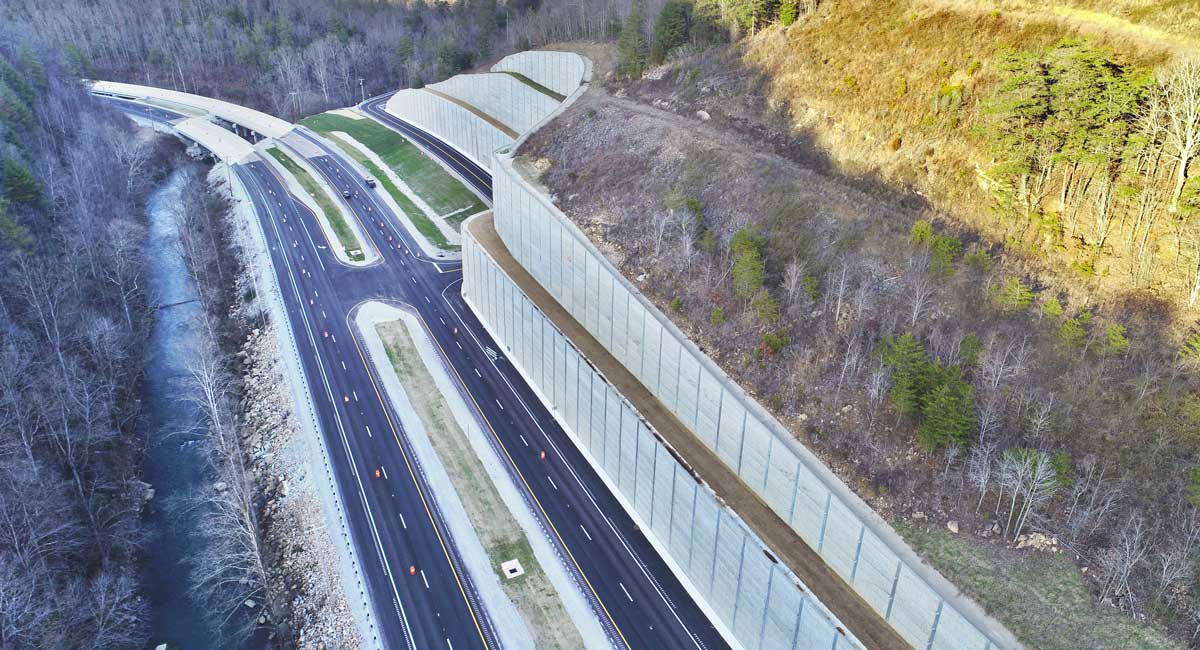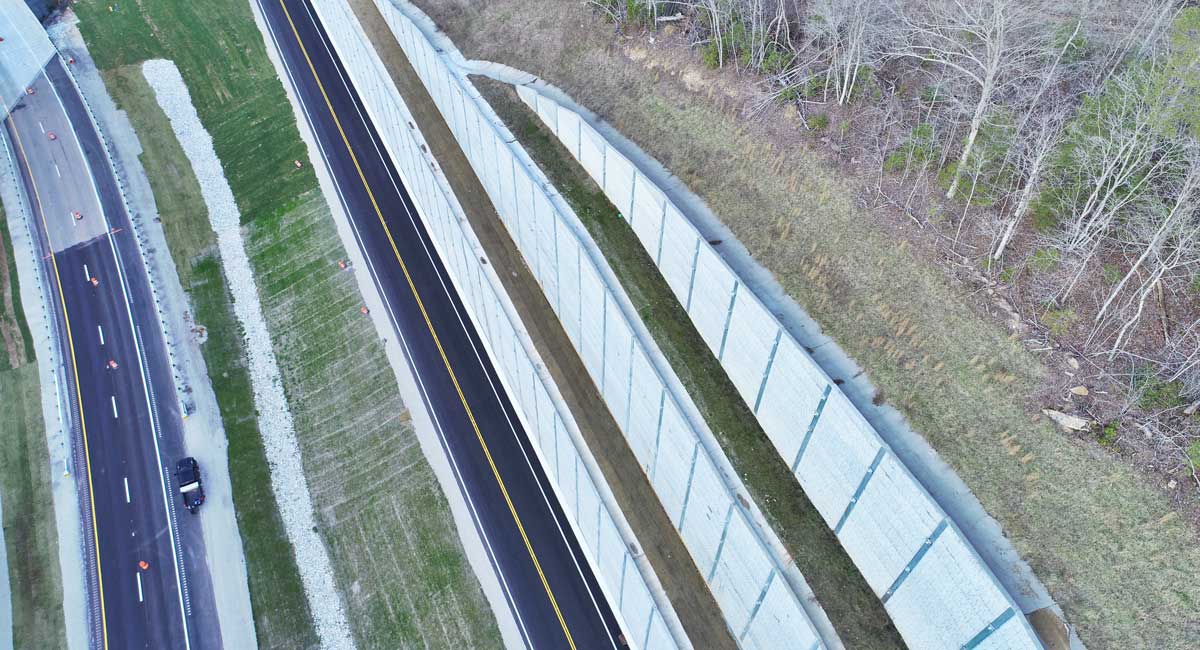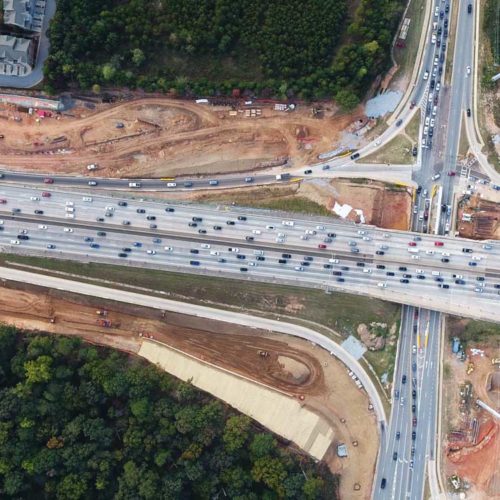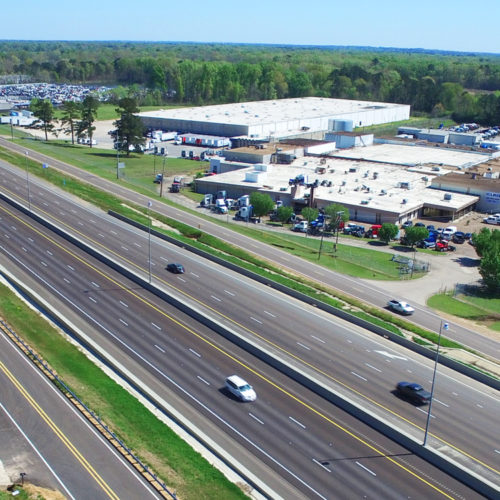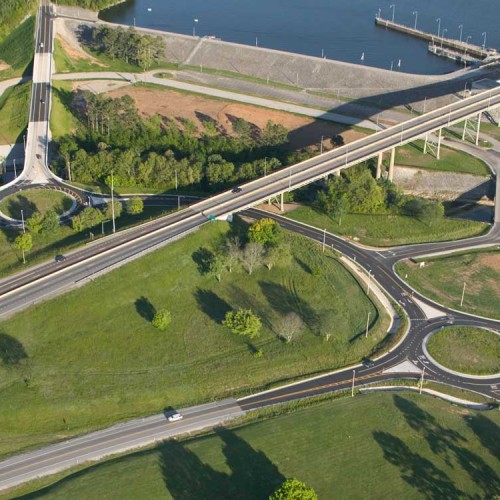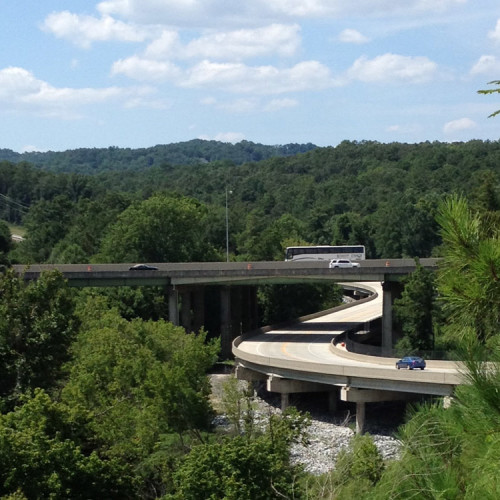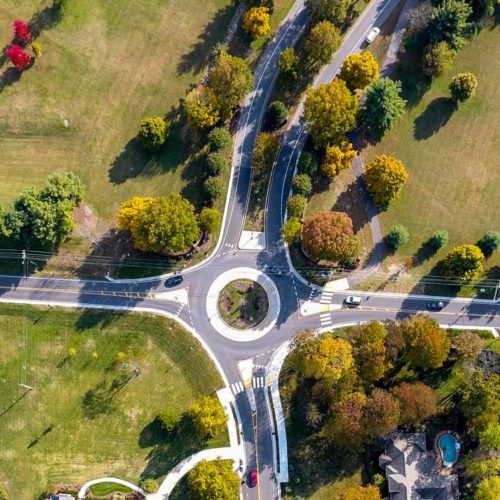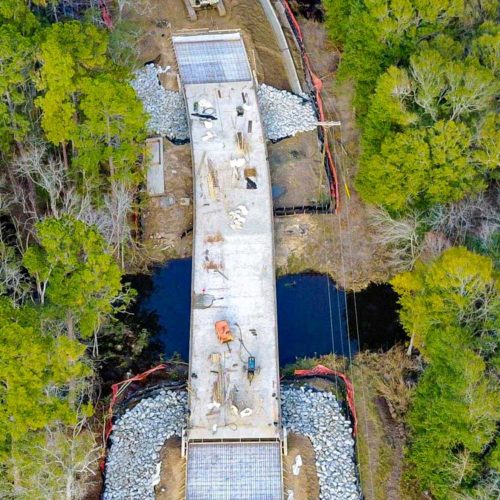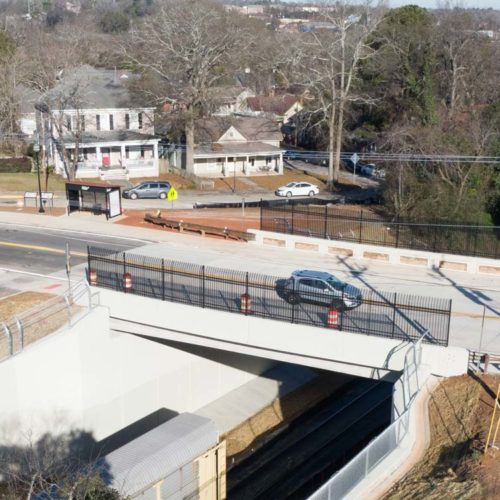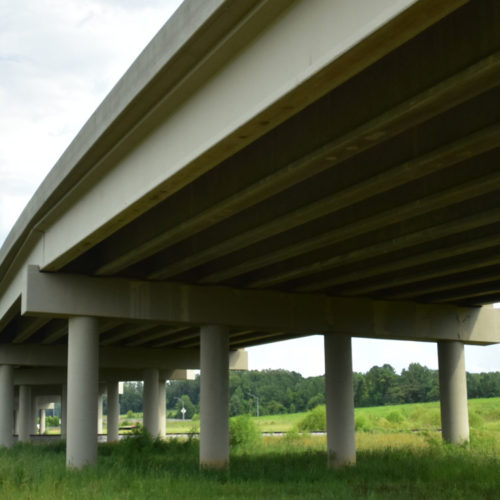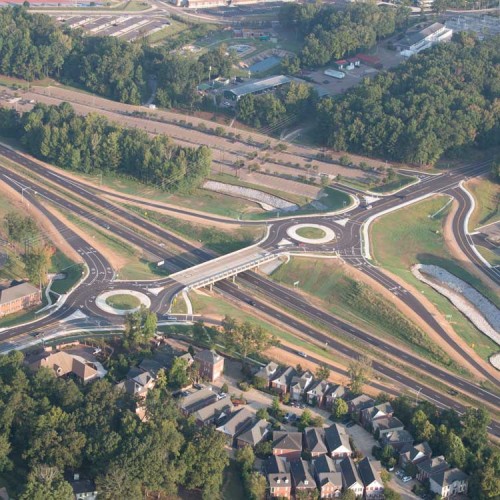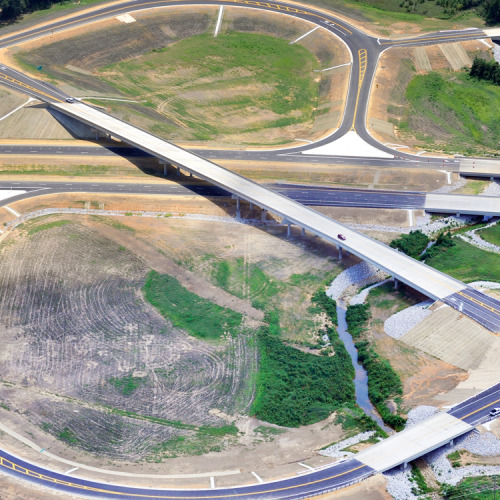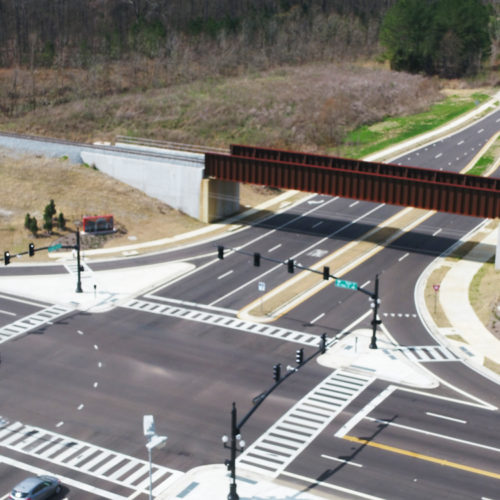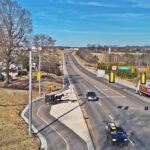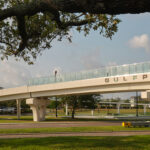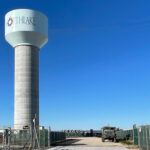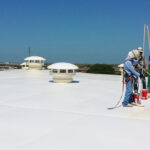HARRIMAN, TN
Challenging project cuts through steep terrain, environmentally sensitive areas
Neel-Schaffer provided engineering design and construction engineering and construction assistance for a series of large soldier pile retaining walls that were built as part of two projects by the Tennessee Department of Transportation to widen State Route 29 through steep hills northeast of Harriman, TN. The first project let for $62.8 million and the second project let for $33 million.
The project widened the road from two lanes to four, from the interchange at SR 61 to SR 328, a distance of 5.31 miles.
Neel-Schaffer worked as a subconsultant to Blalock Construction on this project.
This was a challenging project due to the steep terrain, environmentally sensitive areas, the presence of acid producing rock, large roadway cuts, and a TDOT requirement that traffic would be maintained during the construction.
The project was phase-constructed in two sections. The first project included nine retaining walls. Eight were cut walls, and one was a mechanically stabilized earth (MSE) retaining wall. The total exposed wall surface is 208,846 square feet, and the total wall cost was $22.7 million. The second project included four cut retaining walls, with a total exposed wall surface of 156,792 square feet and a price tag of $14.2 million. There are three tiers of 50-foot walls for a total height of 150 feet.
At the request of the contractor, Neel-Schaffer also designed drill platforms with three individual sections that could be adjusted vertically and connected horizontally. These movable platforms allowed the drilling subcontractor, GeoStabilization International, to move the platforms as they installed anchors and allow the drill rig to drive continuously down the wall as the anchors were installed. This allowed for an uninterrupted method of installation of the upper anchors in the retaining walls.
About 90 percent of the walls in the rock cuts were installed with free-standing post, precast concrete panels and backfilling without loading the anchors. PVC pipes were used at the anchor locations to maintain the anchor hole during backfilling.
This project was completed in January 2020. Neel-Schaffer provided preliminary engineering in 2015 before the project was let to help determine quantities. Design began in 2016, and construction began in 2016.

